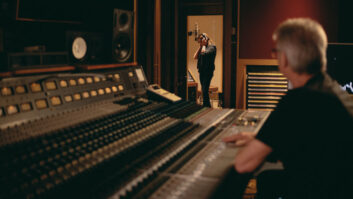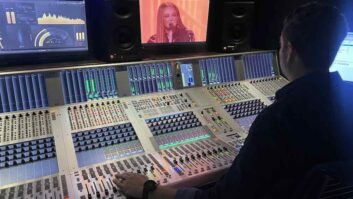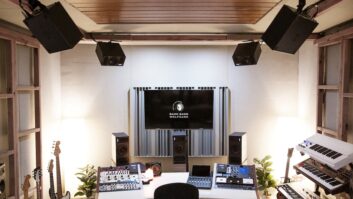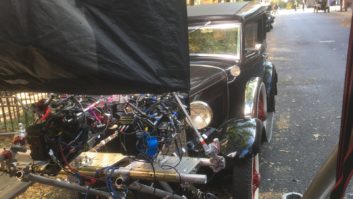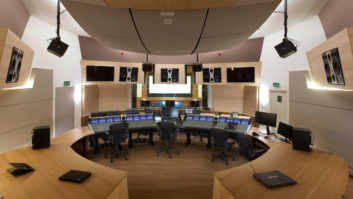At its best, a movie trailer gets the heart racing, the mind reeling and prompts a little voice in your head that says, “I’ve gotta see this film!” Creating a trailer is an art form in itself, but it also has critical fiscal implications: After all, trailers are basically commercials for films, designed to create a buzz and put fannies in the seats, as they say — especially on that critical first weekend of a film’s release, which can make or break a feature. Is it any wonder, then, that making a trailer involves a delicate dance between creative craftspeople and the forces of business/marketing?
There are a number of different categories of trailers, from “teasers” that might come out a year or more in advance of the film and contain little or no footage from the actual film (but get you salivating for that new Pixar flick or that action sequel you’ve been anticipating); to “product reels” designed to excite exhibitors; conventional three- to four-minute trailers, each one perhaps highlighting different aspects of a film — It’s an action film! A buddy picture! A romance!; and 30- and 60-second commercials for different TV market/audiences.
“Basically, I’m mixing all day, every day,” says David Brolin, who has made a career of mixing trailers, first for trailer houses or “boutiques” — businesses that specialize in making film trailers from top to bottom — and for the past six years, for Universal Studios Sound. Brolin estimates he probably mixes 40 to 50 trailers a year, but then there are also “consumer trailers,” which are tacked onto the front of DVDs, TV spots, foreign-language trailers and more. He’s a busy guy.
Because trailers are almost always created long before films have finished post-production (and in some cases, before shooting is even completed), the teams that put them together rarely have sound or music elements from the film to work from, save for some temp dialog tracks (and, if they’re lucky and the film is a sequel, some recognizable bit of score to use). But usually it’s almost a blank slate, so that means that sound editors are raiding commercial effects libraries (such as Universal’s own extensive library) to find the requisite explosions and squealing tires and all manner of whooshes and crashes, and the music supervisor is either licensing existing songs, commissioning original music or using library music of some sort to flesh out the trailer soundtrack.
BRINGING IN DIALOG, FX
Digital technology has had an enormous impact on the world of trailers, and at this point, Pro Tools has become ubiquitous throughout the creative chain. In his studio at Universal, Brolin mixes on a Digidesign Icon D-Control (after several years of working on a ProControl), handling dialog, music and effects tracks delivered to him as Pro Tools sessions. The number of tracks varies from trailer to trailer, he says. “With music, the most simple would be two tracks, but in trailers, everything is layered so you might have a stereo music track, and you might have a drone underneath that, and you might have a cymbal roll or whatever. It could go out to be five or six tracks wide, which doesn’t seem huge in the music world, I suppose. Typically, we have one to two narration tracks, dialog would range to about five, and then effects tracks depend — it can be very simple or it can be something that’s 20 or 30 tracks wide.
“Working on the ProControl and the Icon has been perfect for our needs,” he continues. “Everything is internal and almost everybody cuts on Pro Tools, so it comes in that way and then making changes to the mix is easy. We’ll mix a trailer and that will be ‘trailer 1.’ I’ll give ‘trailer 1’ to my editor, Brendan Cravitz, and he’ll cut and conform to the next trailer, add the differences and come back to me, and it retains its mix without ever having to deal with stems.”
Unlike a feature film, where the director is making ultimate decisions about the final mix, here there might be the trailer producer and a top honcho in marketing calling the shots and asking for changes.
Brolin says a typical trailer mix is about two days. “We’ll get the elements first thing in the morning, do a mix, get the first round of approvals and then we’ll shoot tracks that night. The second day we’ll listen to the DTS tracks along with the film print and we’ll make final changes. It’s so easy to make the changes right there now; it’s made everything much faster.”
Mixing spots for TV has its own requirements, he says, “because there’s so little dynamic range. You mix your narration as loud as you mix your dialog and as loud as your music. Everything is just in your face. If you try to mix something dynamically, unfortunately the dialog is going to sound too low. At least with trailers, it’s dynamic and you have more time to work with.”
Busy as he is today, Brolin thinks there will actually be more trailer work in the future, as marketing becomes ever more sophisticated and niche-conscious, “and when digital cinema really arrives. Then they won’t have to make all these film prints and send them out to theaters. They’ll just send out a digital file, so I think you’ll see trailers mixed in more versions.”
MUSIC CREATIVITY
“A trailer score will in some ways mimic the score of a film,” says Daniel Nielsen, who has written music for many a trailer and TV promo. “There’s a beginning, a middle and an end. Trailers are created visually and musically the same way as features, although we might have only three minutes to tell the story rather than two hours. Obviously, we have to get to the selling point of the trailer more quickly — we don’t have as much time to build the intensity. But it can still be a complicated process. A trailer score can be quite intricate and there might be five, six, seven cues trying to get you from the beginning to the end.”
Music for trailers takes many forms, from a licensed pop song that may or may not be part of the soundtrack for the eventual film (remember when it seemed like “Who Let the Dogs Out?” was part of every comedy trailer for a while?), to dramatic original cues created by composers like Nielsen and others, to library music. Indeed, there are now music libraries devoted to trailer music: Nielsen and trailer music supervisor/producer Nathan Duvall joined forces with library giant Associated Production Music (APM) to put out Siren Cues, and last March, APM released what has proven to be a hugely popular entry in the genre — Epic Score, by L.A.-based composer/mixer Gabriel Shadid and Swedish promo music composer Tobias Marberger. Already, some of their Epic Score tracks have found their way into trailers for Pirates of the Caribbean 2, X-Men 3, Lady in the Water; promos for a wide range of CBS shows, including CSI: Miami, The Unit and Without a Trace; and several videogames.
Though trailer music composers will occasionally be asked to imitate the music of established film composers, they also get the opportunity to stretch themselves creatively, packing a big wallop in a short amount of time. Shadid and Marberger pride themselves on creating highly original dramatic music; for Epic Score, Shadid sampled a choir in L.A., “and most of my orchestras are from custom sampling sessions I did in Prague,” he says. “I’ve also recorded percussionists in L.A., and Tobias is great at both percussion and percussion programming. We combined a lot of these custom elements for our first release.” Not surprisingly, they’re already working on a follow-up to their successful library, and they have also enlisted other composers in the field to widen their palette. “We both love trailer music,” Shadid says. “It’s the height of drama, the height of tension, the height of conflict. It’s promo to the max. I like that there’s a lot on the line, so [studios] are willing to put a lot into the trailers and go to the ends of the Earth to promote their films.”
According to Siren Cues’ Nathan Duvall, film directors rarely have input into the music that is used in a trailer, “so generally speaking, it’s the trailer houses and the [studio] marketing department who set the tone and the pace with the music and the images. Occasionally, you have a seriously powerful director who either has a franchise, like The Lord of the Rings or Spy Kids, and he has an idea of what the themes should be, and then possibly you have some kind of collaboration or you just re-introduce the themes from an earlier installment.” Although in the case of the second The Lord of the Rings campaign, Nielsen actually borrowed the string quartet theme from another film — the indie Requiem for a Dream — and had it re-orchestrated to sound much bigger.
“Our production level for a trailer has to visually match the impact of the film,” Nielsen notes. “The music has to be consistent with what you’re looking at.”
“But I can’t tell you the number of times we’ve heard, ‘Can it be bigger?’” Duvall adds with a laugh.
Nielsen and Duvall have no illusions about the function of their work. This is, after all, still advertising, “and there are many levels of approval in trailer music,” Duvall says. “Generally, Dan, the composer, is answering to the music department, editor, and producers and partners of the trailer house. Then it is approved by the VP of marketing and then they test the trailer, and if it doesn’t test well, you might be back to the beginning or maybe you just make a few adjustments.”
But the actual work has an infinite amount of variety, which is what keeps it interesting. “You might have five genres of music in one trailer,” Nielsen says. “One day I might be working on a full-on techno cue, like Crystal Method or Massive Attack, and the next it might be working with a giant orchestra. It’s been an interesting education trying to get a handle on all the different styles. To me, it doesn’t matter: I’m still creating music, which is what I love to do. And it’s music that’s servicing an industry.
“This is always a team effort. As a composer, the way I would define my success is to deliver what everybody wants. I’m the happiest when I see it working in everybody’s vision.”
